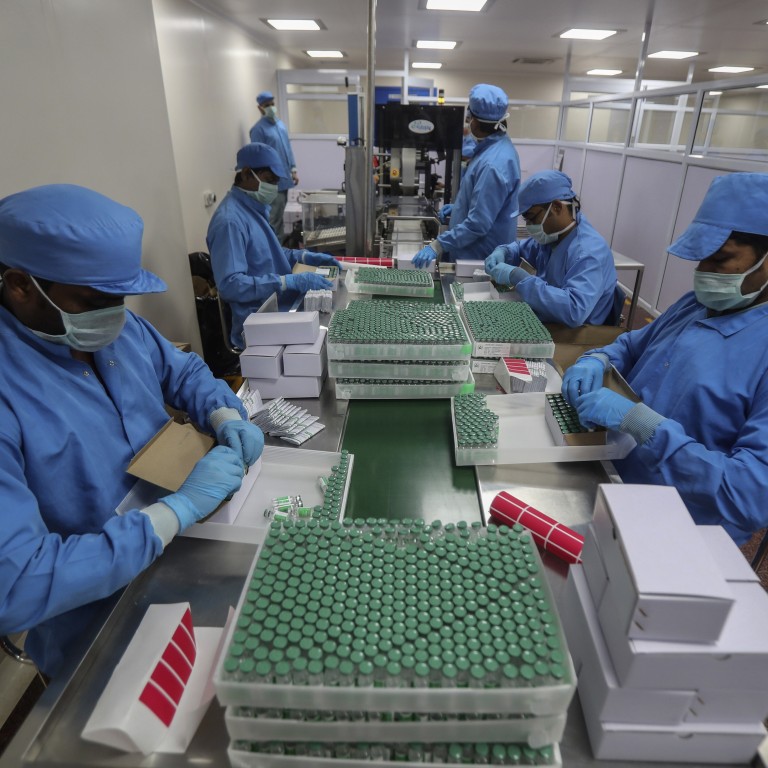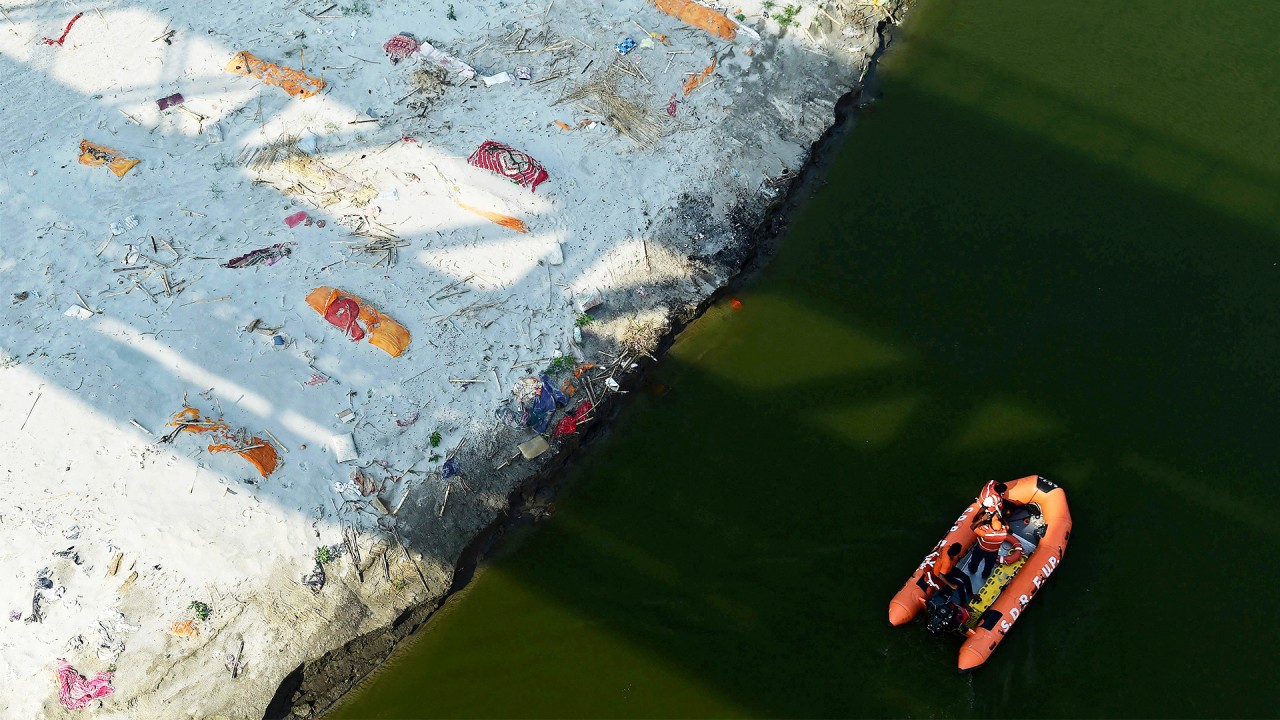
Explainer | Why is India facing a coronavirus vaccine crunch and can it ramp up production?
- India’s major players making vaccines include the Serum Institute of India, Bharat Biotech, Dr Reddy’s, Biological E and Cadila Healthcare
- But a cash crunch, supply chain issues, second wave of infections and lockdowns have left the world’s largest vaccine producing nation struggling to meet demand
“If India wants to cover all of its adult population in 12 months, it should produce at least 5.4 million doses per day. Currently, India produces only about 2.3 million to 2.4 million doses per day.
“Clearly, we need more than a doubling of production in India, or we need to import significantly,” said R Ramakumar, a professor at the school of developmental studies at the Tata Institute of Social Sciences. He has been closely following the vaccine output for months.
The government has been fast-tracking regulatory processes and supporting the vaccine makers through advance payments. But production can’t keep up with demand.

02:11
India passes 300,000 coronavirus deaths as mass graves found along Ganges
WHO ARE THE MAJOR PLAYERS?
Makers of approved vaccines
The Serum Institute of India, a privately held firm, is the world’s biggest vaccine producing firm and had promised to manufacture 1.1 billion doses of Covishield for the Covax Facility scheme. Its current output is 65 million doses a month or about 2 million doses a day. With the Indian government exerting pressure on Serum to deliver vaccines for the domestic market, it is unclear how many doses will eventually be channelled to Covax Facility, though Serum’s chief executive Adar Poonawalla has said exports will be restarted this year.
Serum also has a deal with American biotechnology firm Novavax to produce one billion doses of its Covovax vaccine for use within India and for export. The first 200 million doses are supposed to be produced by the end of the year. But the vaccine is still undergoing Phase 3 trials in India and is not approved for use yet.
India’s coronavirus infections subside but vaccine shortage worsens
Bharat Biotech, the second-largest producer of vaccines, developed the home-grown Covaxin. As of April, it had supplied 20 million doses for domestic use. Last week, the company announced it would ramp up the production of Covaxin to a total production capacity of one billion doses a year.
The company is also in the early stages of trialling its intranasal vaccine, which is at least months away from clinical approval.
Dr Reddy’s, an Indian pharmaceutical firm, has partnered with Moscow’s sovereign wealth fund, Russian Direct Investment Fund (RDIF), to import and produce the Sputnik V vaccine locally. Dr Reddy’s will manufacture 36 million doses in the coming months, while RDIF has also tied up with six other firms to manufacture more than 850 million doses a year.

Pending approval
Biological E, headquartered in Hyderabad and the country’s oldest private vaccine maker, is to start producing Johnson & Johnson’s single-dose vaccine as well as its yet-to-be-named home-grown vaccine, which is in the advance stages of clinical trials.
Johnson & Johnson added it was “premature” to answer questions on the timeline of vaccine deliveries and how much of the production would be designated for export.
Under an earlier agreement with Johnson & Johnson, Biological E would produce 600 million doses per year.
Herd immunity stalemate faces Asia’s ‘zero-Covid’ economies
Cadila Healthcare is looking to increase monthly production of its vaccine candidate ZyCoV-D to up to 30 million doses in four to five months, from 10 million now, its managing director, Sharvil Patel, told Reuters.
Reuters reported last month Cadila was seeking emergency use authorisation for the shot from India’s regulators in May or June.
ZyCoV-D is a DNA plasmid vaccine, which uses a portion of the genetic code – DNA or RNA – in the virus to stimulate an immune response.
It is undergoing late-stage trials in nearly 30,000 adults after being found safe and immunogenic in earlier studies. It is meant to be given in three doses but Cadila is also doing trials on a two-dose regimen, Patel has said previously.
Pune-based Gennova Biopharmaceuticals is also testing India’s first indigenous mRNA vaccine, which is in phase-2 trials.

01:46
The black fungus nightmare facing India’s coronavirus patients
WHY IS THERE A SUPPLY CRUNCH?
The government has pledged to make 2.67 billion doses available this year. But vaccine makers are struggling to scale up production due to factors such as a cash crunch, supply chain obstacles, a second wave of infections, and lockdown measures.
“The major hurdle in raising production is the lack of production capacity among the producers who have been licensed. The government should have licensed more producers earlier,” said Ramakumar.
“Some of the producers are trying to raise capacity, but it would take at least six to eight months for that to be realised.”
Though the entire pharmaceutical industry is classified as essential services, it is not fully immune to multilayered lockdowns in Indian states. The effects of stringent safety measures, travel restrictions and rising Covid-19 infections are felt across the sector.
“Even during the first wave, pharma companies were under essential services and there were some minor issues initially but it was regularised quickly. This time also, there is no hurdle at the factory level,” said Mahesh Doshi, president of the Indian Drug Manufacturers’ Association.
Will ‘self-reliant’ India’s second Covid-19 wave force rethink on China?
Beyond advance payments for the dosages, there has not been any large-scale financial support from the government.
“It is submitted that no government aid, assistance or grant is made for research or development of either Covaxin or Covishield. However, they were given some financial assistance for conducting clinical trials,” the government said in an affidavit submitted to the Supreme Court this month.
From the central government’s coffers, Serum and Bharat Biotech received US$400 million and US$210 million in April to boost output.
The supply chains of almost all the vaccines, including Covishield and Covaxin, have been hit and the chiefs of all major companies have requested the US to ease the supply of crucial vaccine ingredients. The Indian government has submitted a list of ingredients, which require smooth supply, to Washington, which has placed the export of vaccine raw materials under the Defense Production Act.

04:15
Hong Kong-based Indians pitch in to help fight Covid-19 outbreak back home
SO CAN INDIA RAMP UP SUPPLY?
It will depend on how quickly supply chain bottlenecks are ironed out – and this item is top of the agenda for Indian External Affairs Minister S. Jaishankar who is on a five-day visit to the US.
Also on Jaishankar’s agenda is India’s bid to secure some of the 80 million doses that Washington has committed to sharing with other countries. New Delhi has pledged to fast track approvals for other overseas vaccines in a bid to encourage vaccine makers to produce their doses in India and is also seeking to buy more vaccines directly from them. But the chances of the latter seem low given that order books are already full on the back of global demand for shots.
For instance, New Delhi has just roped in the Bharat Immunologicals and Biologicals Corporation Limited (Bibcol), a state-backed entity that produces Polio vaccines, to manufacture 10 million doses of Covaxin a month. Similarly, two other state-run facilities have been drafted to meet the rising demand.
Renowned scientist Virander Chauhan is optimistic and believes that India’s mix of domestically-produced overseas vaccines and home-grown candidates put it in a good position to help the rest of the world “hopefully by the end of 2021”.

